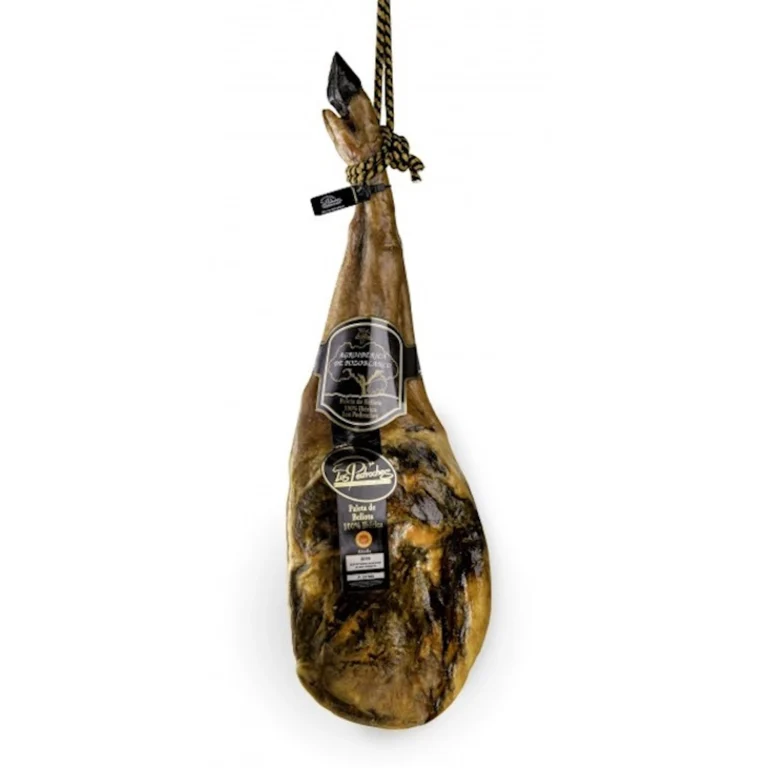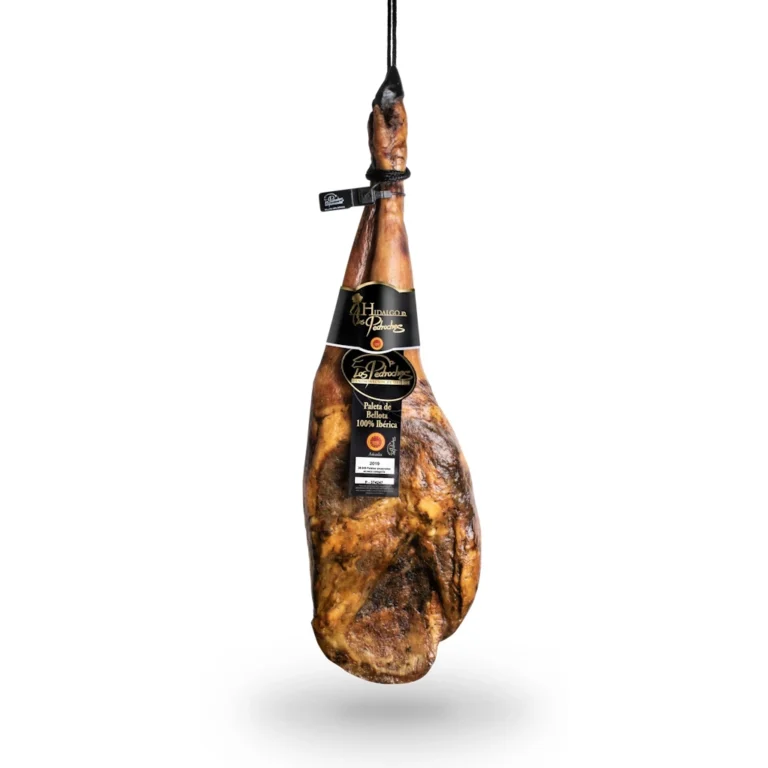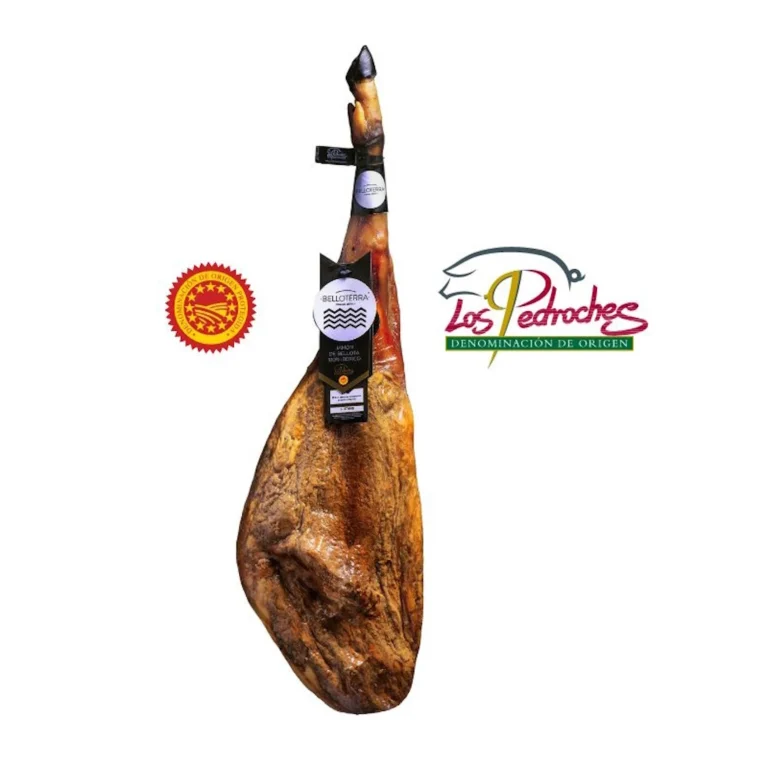The Iberian Ham Route in Extremadura
- Tourism
Indice

Iberian Ham in Extremadura
The Iberian Ham Route in Extremadura reveals the artisanal and natural process behind this prized delicacy, a journey that begins in the pasture and culminates at the table. It highlights the deep cultural connection and the challenges that traditional producers face to keep this ancient activity alive.
Iberian ham, with a Designation of Origin, is the result of a process that spans several years. It all begins with raising free-range pigs, fed on acorns in the Extremadura countryside. This is followed by a meticulous salting and curing process that can last several years until the ham reaches its peak. The Montánchez region is a key spot for exploring this tradition, an activity that, unfortunately, is at risk of disappearing.
The Designation of Origin of Iberian Ham
The artisanal and natural nature of Iberian ham justifies its Designation of Origin, making it a highly valued souvenir from Spain. The pigs are fed acorns in a natural environment, which contributes to this product being a highly valued export. Experts in slicing this fine delicacy advise not chewing it, but rather letting the fat melt on your tongue to fully appreciate its flavor. Although industrial production also exists in Extremadura, the traditional and ancestral method is the most appreciated and valued.
Extremadura is considered the ideal place for raising these pigs due to its vast “dehesa,” a natural ecosystem dominated by holm oaks and cork oaks. The acorns from these trees are the basis of the pigs’ diet, giving the meat its distinctive flavor and texture. This organic method is also economically viable for producers.
The History of Iberian Ham
The history of Iberian ham dates back to pre-Roman times, when the Phoenicians introduced pigs to the Iberian Peninsula and the Romans perfected preservation methods through salting. Over the centuries, it became a highly prized delicacy, even being used as a form of payment. During the Middle Ages, the clergy kept the tradition alive, and during the Renaissance, it became established as a symbol of wealth and social status. The discovery that salt not only preserves but also enhances flavor was crucial in its development.
High-altitude Iberian ham
Ham from villages located between 250 and 300 meters above sea level is more potent. This is because the animals walk more in the pasture during the summer, which increases their transpiration. It is important to highlight the importance of good pigs, qualified “master ham makers” who understand animal management, salting times, humidity, and good drying facilities. Free-range pig farming in the natural environment of Extremadura significantly influences the final quality of the product.
An example is Tobías, an artisanal producer from Montánchez, a small town of 1,500 inhabitants. Tobías raises gray, hairless pigs on his farm. He manages about 50 pigs a year, with a breeding period of 24 months, which means he has around 100 pigs at any given time. He recalls that in his childhood, owning a pig was highly valued, as it ensured food during the winter. Tobias works alone, continuing a tradition inherited from his grandfather and father. His location benefits from a microclimate and altitude that favor the presence of chestnut and oak trees, whose acorns are a crucial part of the pigs’ diet during the “montanera” period.
Before the montanera, the pigs are fed corn, grasses, and animal feed (cereals and legumes). The montanera, which lasts approximately four months, from November to March, involves releasing the pigs into the pasture to roam freely and feed on acorns and grasses, reaching their optimal weight. This free-range grazing among holm oaks, cork oaks, chestnut trees, and oaks in a cool microclimate is essential for the quality of the ham.
The Iberian ham manufacturing process
The quality of the ham depends on the breeder and is evident in the taste, with variations in texture and flavor depending on the breed. The Iberian pig has a fine snout, thin “cañitas” (wrists), and heels. These pigs enjoy a high quality of life, consuming 1 kg of acorns a day and gaining weight during their three months in the field before being slaughtered and butchered.
- The clean, shaped pieces of ham, with the characteristic V-cut on the leg, arrive from the slaughterhouse. They are placed horizontally and interspersed in a salting room, covered with
- After salting, they are washed and pressed to remove any remaining blood.
- They are then hung in dark chambers at 4°C to cure throughout the summer.
- In late August or early September, they are moved to the sweating rooms for a year or more.
- And finally, to the cellars to complete the curing process.
We will highlight the immense effort that goes into each ham, including the precise application of salt, humidity, and time by the master ham makers. Historically, hams were kept in caves or in the upper parts of houses to “sweat” for two or three years.
Nota importante: aceitedelcampo.com promueve el consumo del aceite de oliva virgen extra por sus cualidades culinarias y beneficios para la salud. No obstante, no debe sustituirse ningún medicamento o tratamiento actual sin la orientación de un profesional de la salud.
Productos que te pueden interesar
16,50 € – 320,00 €Price range: 16,50 € through 320,00 €
140,00 € – 156,00 €Price range: 140,00 € through 156,00 €
18,50 € – 470,00 €Price range: 18,50 € through 470,00 €



